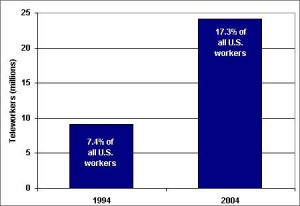Two Ways to Keep Employees
Friday, May 22nd, 2009
 Even Google, a company famous for its happy work environment and revolutionary business model, has trouble keeping good employees. If it wasn’t the fun, start-up atmosphere and valuable stock options that kept everybody motivated, the unusual perks did. Who wouldn’t love to work where you receive free bus service, free gourmet meals in the company cafeteria, on-site gym and dry cleaners, and a pets-allowed policy?
Even Google, a company famous for its happy work environment and revolutionary business model, has trouble keeping good employees. If it wasn’t the fun, start-up atmosphere and valuable stock options that kept everybody motivated, the unusual perks did. Who wouldn’t love to work where you receive free bus service, free gourmet meals in the company cafeteria, on-site gym and dry cleaners, and a pets-allowed policy?
But lately, high-level and midrange employees have been jumping Google’s ship for newer start-ups like Facebook and Twitter. And Google is not taking it lying down. They have been crunching the numbers and developing formulas that can predict which of its 20,000 employees are thinking of moving on. Google is looking at employee reviews, promotion history, and pay scales, among other factors, and says the new algorithm has identified employees who feel underused—a big reason for employee dissatisfaction.
It’s nice to have the big data-crunching companies out there spotting trends that can help businesses run things better. So, what can employers can learn from Google’s example?
Keep Employees Engaged
Many companies concentrate on the customer—and that’s a good thing. But too much attention to one side of the equation can lead to disaster on the other. Employees want to know that they are just as important to a company as the customers, the financial statements, and the economy. They care about their contributions, and if they feel underused, productivity could be affected fast.
Ask employees—often—about how they feel about their position and its importance to the company. You may discover that you and your staff have very different views on the subject. It’s up to the employer or manager to come up with ways to keep employees challenged and engaged, and to re-evaluate these efforts on a regular basis.
Reward and Appreciate
It’s so easy to overlook this aspect of managing employees—especially in a difficult economy. Many employers feel that they’ve done enough by providing jobs and that alone should be enough appreciation. And to some employers, reward comes in the form of a regular paycheck. Fair enough! But if reward and appreciations is proven advantageous to the company’s bottom line, it might be enough to convince even the most resistant employer to make the attempt.
Certainly the cost of hiring employees affects a company’s profit. Advertising, recruiting, interviewing, and training are time and money drains on any business. Avoiding that expense by keeping good employees is simply a smart business decision.
One example is Nugget Markets, a small regional grocery chain in California. With a 12% turnover rate, they are well below the industry’s average of 20%. Their culture includes providing employees with free food, dance parties, field trips and bonuses helps to keep 900 staff people feeling appreciated.
For Nugget Markets, efforts that let their team know they’re valuable has helped keep turnover at a level their competition can’t touch.
Learning from the big guys is something employers of every size can do. Try keeping employees engaged and challenged, and make them feel appreciated. Remember that what’s good for your staff is good for your company’s bottom line, too.

